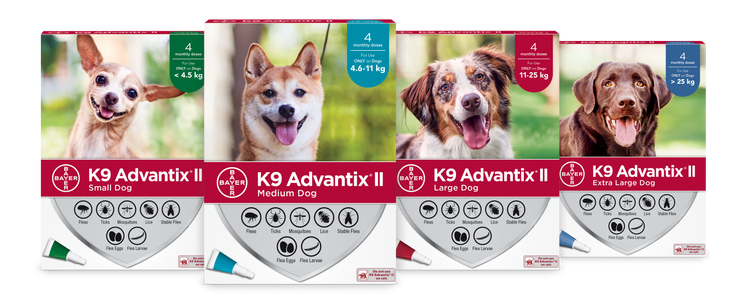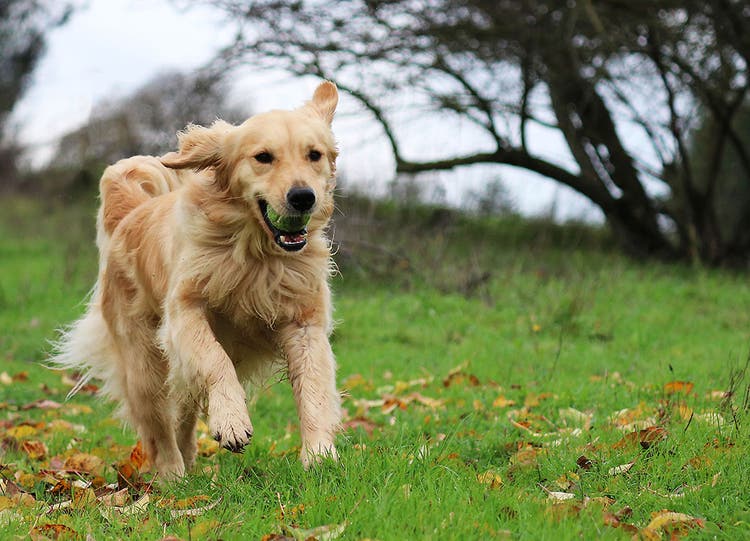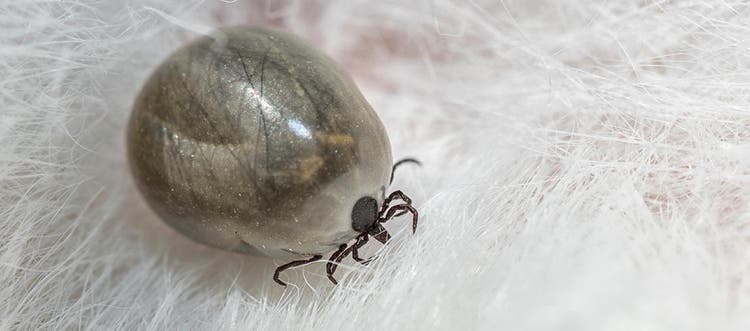Flea allergy dermatitis (FAD) is one of the most common skin conditions found in dogs and cats. Learn how to recognize the signs of FAD, get proper treatment for flea allergy dermatitis and prevent it from happening in the first place.
Flea bites expose pets to flea saliva – which some pets become allergic to over time. This allergic reaction is known as flea allergy dermatitis, or FAD.
FAD is an allergic skin condition that generally affects pets one year and older and commonly occurs in dogs and cats with underlying skin diseases like atopic dermatitis.1 ,2 Pets with FAD can damage their skin by constantly scratching, biting or licking, and this damage can lead to secondary infection.
What does FAD look like?
The most common sign of flea allergy dermatitis in cats and dogs is intense itchiness, but there are others to watch for:
- Appearing restless and uncomfortable
- Spending a lot of time grooming, chewing, biting, licking and scratching themselves or rubbing their skin against objects
- Hair may be stained brown from licking – especially obvious in white pets
- Skin changes in dogs: hair loss, rash, reddened or darkened skin, thickened skin, scratches or wounds from self-trauma, typically along the lower back and base of the tail, the thighs and belly
- Skin changes in cats: hair loss and rash typically involving the back half of the body (belly and back), hind legs (inner and back surfaces), back of the neck and, less commonly, on the head
It's also important to look for damage to your pet’s skin that can lead to secondary infections (reddened, moist areas called “hot spots”) that will exacerbate the itching.3 ,4
Treating flea allergy dermatitis in your pet
If you do suspect your dog or cat has flea allergy dermatitis, take them to your veterinarian. They will look for evidence of fleas and may perform a flea elimination trial, skin tests or blood tests.
Bites from just one flea can be enough to trigger intense itching in a pet with FAD, and your veterinarian may diagnose FAD even if fleas or flea dirt (flea feces) aren’t visible.
Minimizing the number of flea bites is the most important part of managing FAD. You can control fleas year-round with effective, fast-acting products like K9 Advantix®II (dogs only)* or Advantage®II flea treatments. Imidacloprid – the active ingredient in both solutions, kills fleas through contact in as little as two hours.5 This means that fleas don’t need to bite your pet and cause further irritation before the treatment takes effect. Once fleas come into contact with your pet, they are affected within 3-5 minutes. Re-infesting adult fleas are killed within 2 -12 hours of jumping on your pet.6
All pets in the household should be treated whether or not they show signs of flea infestation.
* Do not use K9 Advantix®II on cats.
Talk to your veterinarian about how to get rid of flea allergy dermatitis.
On top of using a fast-acting, effective flea control to minimize flea bites, your veterinarian may advise the following flea allergy dermatitis treatments to help heal your pet’s damaged skin, eliminate bacteria and alleviate the itching:
- Topical (applied directly to the skin) or systemic (given orally or by injection) antibiotics
- Topical or systemic anti-inflammatories
- Medicated shampoos and conditioners
Always consult your veterinarian when using a medicated shampoo and/or conditioner in combination with K9 Advantix®II or Advantage®II. Apply flea treatment on a dry coat, then wait 48 hours before bathing your pet.
Do not use K9 Advantix®II on cats
- Noli, C, Foster, A and Rosenkrantz, W, Veterinary Allergy, 2013, 1st edn, Wiley Blackwell, New Jersey.
- Miller, WH, Griffin, CE and Campbell, KL, Muller and Kirk’s Small Animal Dermatology, 2013, 7th edn, Elsevier Mosby, Missouri.
- Noli, C, Foster, A and Rosenkrantz, W, Veterinary Allergy, 2013, 1st edn, Wiley Blackwell, New Jersey.
- 2 Miller, WH, Griffin, CE and Campbell, KL, Muller and Kirk’s Small Animal Dermatology, 2013, 7th edn, Elsevier Mosby, Missouri.
- Mehlhorn, H, Hansen, O and Mencke, N, Comparative study on the effects of three insecticides (fipronil, imidacloprid, selamectin) on developmental stages of the cat flea (Ctenocephalides felis Bouche 1835): a light and electron microscopic analysis of in vivo and in vitro experiments, Parasitology Research, 2001, 87(3): 198-207.
- Cruthers L, Bock E (1997) Evaluation of how quckly imidacloprid kills fleas on dogs. Suppl Comp Cont Educ Pract Vet 19 (5):27

Advantage®II for Cats & Dogs
Advantage®II is a fast-acting flea treatment for cats, dogs, rabbits and ferrets

K9 Advantix®II for Dogs
K9 Advantix® II protects dogs from fleas, ticks, mosquitoes, lice, stable flies, flea eggs, flea larvae









